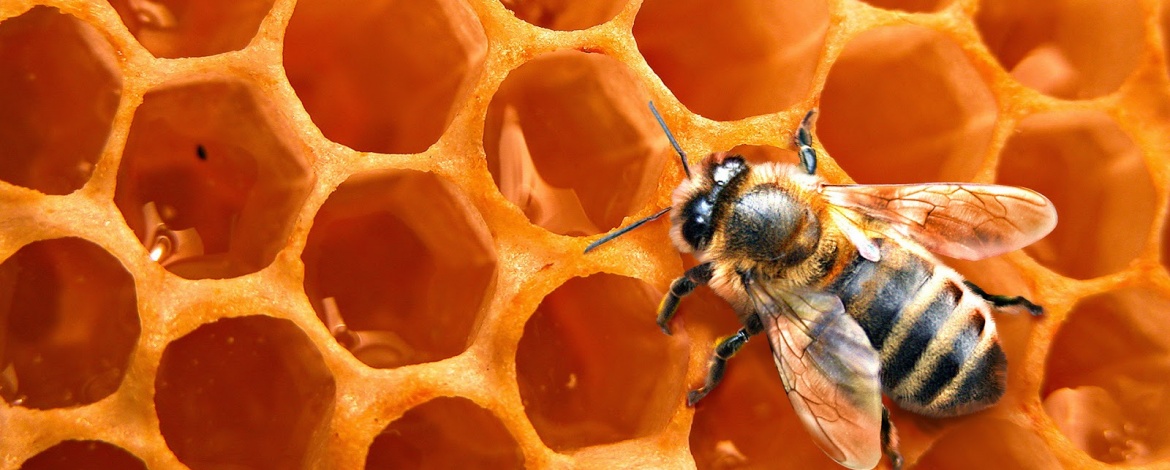In my new ‘Evidence-based medicine series’ I take you through the scientific evidence for common, but not always mainstream, treatments and remedies. First up is manuka honey.
The many medical benefits of manuka honey
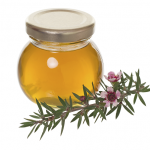 If I ever have a sore throat I always reach for a spoonful of active manuka honey. I swear by it, as time and again it seems to heal my sore throat and prevents me from going on to develop a nasty cold virus. As a scientist, I know there is a great deal of scientific evidence for the anti-viral, anti-bacterial and anti-inflammatory properties of active manuka honey from New Zealand and Australia.
If I ever have a sore throat I always reach for a spoonful of active manuka honey. I swear by it, as time and again it seems to heal my sore throat and prevents me from going on to develop a nasty cold virus. As a scientist, I know there is a great deal of scientific evidence for the anti-viral, anti-bacterial and anti-inflammatory properties of active manuka honey from New Zealand and Australia.
Anti-viral properties of manuka honey
There is strong scientific evidence that manuka honey is a very potent agent for killing the influenza (flu) virus. Scientists looking at the anti-viral effects of honey have shown strong anti-influenza activity with manuka honey in particular showing strong inhibition.
One research team, led by Professor Ken Watanabe from Nagasaki University in Japan, has reported that honey actually inhibited replication of the flu virus. When the influenza virus was pre-treated with manuka honey before infection of cells, the virus was rendered inactive. This is termed virucidal activity.
“Influenza viruses are a serious threat to human health. Thus, there is an urgent requirement for the development of novel anti-influenza virus drugs,” explained Prof Watanabe.
“Natural honey has been reported to exhibit antiviral activities against rubella virus and varicella-zoster virus and is used to treat recurrent herpes simplex lesions.”
Writing in the journal Archives of Medical Research, Prof Watanabe, also described a strong synergistic effect of honey with the anti-viral medicines zanamivir and oseltamivir.
“Although honey was less potent than zanamivir against influenza virus, we observed that a combined use of anti-influenza drugs with manuka honey resulted in synergistic anti-influenza virus effects,” he explained.
Both zanamivir and oseltamivir are M2 ion channel inhibitors and the usefulness of this class of anti-virals has been limited due to development of drug resistance.
The researchers also noted that further research is necessary to determine the exact anti-viral components in honey and whether synergistic activity can be observed with other anti-virals.
The study authors concluded:
“Our results showed that honey, in general, and particularly manuka honey, has potent inhibitory activity against the influenza virus, demonstrating a potential medicinal value.”
Influenza viruses are enveloped RNA viruses and strains A and B both cause influenza in humans. In Australia, this winter has been a particularly severe flu season with strains A and B both occurring together.
Reference: Watanabe et al. Archives of Medical Research 45 (2014) 359-365. The full article can be accessed here.
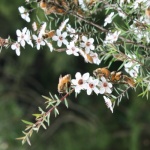 Wound healing properties of manuka honey
Wound healing properties of manuka honey
Manuka honey has also been shown to have multiple wound healing properties. The mechanisms by which manuka honey assists in wound healing have been published in a comprehensive review in the academic journal Wounds.
The authors of the review, Prof Peter Molan, University of Waikato, Hamilton, New Zealand and Dr Tanya Rhodes, condense the huge volume of scientific evidence which has been published and outline every component and property of manuka honey which combine to give it incredible wound healing qualities.
Prof Molan and Dr Rhodes explain that some of the properties that enhance wound healing include:
- The acidic pH at approximately 3.2-4.5 helps to release oxygen to the wound to promote healing.
- The high sugar content assists by forcing water out of the wound and drawing water out of bacterial cells.
- Even when diluted, manuka honey shows antibacterial potency against many different bacterial species, including those strains that have developed antibiotic resistance.
- Manuka honey is effective against biofilms (thin layers of bacteria that are protected against conventional antibiotics due to their method of growth).
- Many clinical studies have proven the effectiveness of manuka honey for non-healing, chronic, venous leg ulcers.
- Manuka honey stimulates the immune system at the wound site by activating white blood cells, the cells that fight infection (also called leukocytes).
The authors also detail the companies that currently manufacture manuka honey impregnated dressings for use in the clinical setting:
- Algivon Dressings, Advancis Medical, Kirby in Ashfield, Nottingham, UK.
- Medihoney Apinate Alginate Dressing, Derma Sciences, Princeton, NJ, USA.
- Manuka Health Wound Dressings, Manuka Health New Zealand Ltd, Auckland, NZ.
- ManukaHD, ManukaMed, Largo, FL, USA
“Bacterial infection and critical colonization can inhibit healing, either through the direct effects of bacteria on wound tissue, or through the deleterious effects of excessive inflammation, but the combination of antibacterial and anti-inflammatory activity within honey, along with the debriding action of detaching slough (which is a harbor for inflammation-causing bacteria), may explain why honey can so readily bring about the healing of chronic wounds,” concluded the scientists.
You can read the full article here to find out more about wound healing manuka honey.
Active manuka honey may be vital in the fight against antibiotic resistance
Ground-breaking new research published in the journal Frontiers in Microbiology has shown that antibiotics and manuka honey work synergistically to destroy bacteria.
The research, conducted across three institutions in both Australia and New Zealand, has shown for the first time that the bacteria Staphylococcus aureus (S. aureus) can be destroyed more effectively when antibiotics, such as Rifampicin and Oxacillin, are used together with medicinal manuka honey.
Professor Liz Harry, who heads the group researching honey at the iThree Institute, University of Technology Sydney, explained that the research was conducted “to address the urgent problem of antiobiotic resistance”.
S. aureus is commonly involved in slow-healing, chronic wounds like diabetic foot ulcers and venous leg ulcers. Methicillin-resistant S. aureus (MRSA) is a strain of the bacteria that has become resistant to the majority of antibiotics and now poses a serious health risk.
In the research, Professor Harry together with colleagues at The School of Molecular Bioscience, University of Sydney and Comvita New Zealand Limited, tested four different antibiotics against four different strains of S. aureus. The antibiotics tested by the researchers included:
- Rifampicin
- Oxacillin
- Gentamicin
- Clindamycin
The antibiotics were combined with controls of no honey (black bar on graph), and a 5% sugar solution (blue) and tests of 5% manuka honey (purple) or 5% Medihoney (red). The results can be viewed here.
“We demonstrate increased sensitivity to both antibiotics and manuka-type honeys when they are used in combination, even when strains are clinically resistant to a particular antibiotic,” reported Professor Harry.
“For all tested S. aureus strains, the rifampicin-honey combination is the most promising, with synergistic inhibition observed for both planktonic growth and biofilm formation. Thus our work suggests that NZ manuka-type honey has excellent potential as an alternative natural antimicrobial agent for use in combination therapy with rifampicin against S. aureus-related skin infections.”
In previous research it has been found that manuka honey works in multiple ways, not only destroying the bacterial infection directly, but also acting by other mechanisms that promote wound healing and boost the immune system.
Professor Harry commented that: “Honey represents a ‘challenge to the norm’ for healthcare workers and remains under-utilised in mainstream healthcare, often only used as a last line treatment when other therapies have failed.”
Reference:
Liu et al. Front Microbiol. 2015 Jan 27;5:779. doi: 10.3389/fmicb.2014.00779. eCollection 2014.
You can read the full text of the journal article here.
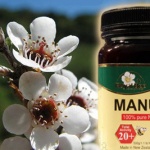 Did you know that all manuka honey is not created equal? Do you want to know how to choose a potent manuka honey?
Did you know that all manuka honey is not created equal? Do you want to know how to choose a potent manuka honey?
When you purchase a jar of honey you may notice a UMF® factor – perhaps 5+ or 10+, some are even 15+ or 20+. So what does this number mean? UMF® stands for ‘Unique Manuka Factor’ which is a measured rating of the bioactivity found in New Zealand Manuka honey. Manuka honey is produced by bees that collect from a New Zealand native species called Manuka or Leptospermum scoparium. Some Australian species of manuka also give rise to active manuka honey.
The UMF of Manuka honey is calculated by measuring its effect on bacteria growing on an agar plate and comparing it to phenol. A UMF® of 10 is manuka honey that destroys bacteria in an equivalent way to a 10% phenol solution. The test is done in this way as this is how the potency of disinfectant was assessed in the past.
The procedure involves growing MRSA bacteria (also called Staphylococcus aureus or Golden Staph) on agar in a petri dish. Manuka honey is then placed in the centre of the dish and ‘incubated’ for several days. The ‘zone of inhibition’ where the honey has destroyed the bacteria is then compared to a group of agar plates that have been treated in the same way, but instead of honey, 5%, 10%, 15%, 20% phenol solutions have been placed in the centre of the dish. If the ‘zone of inhibition’ matches that on the 15% phenol plate then that honey gets a rating of UMF 15+ (or NPA 15+).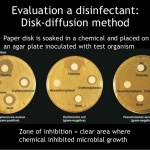
Other labels that you may see on your honey jar include NPA, which stands for non-peroxide activity and MGO, which stands for methylglyoxal. NPA is exactly equivalent to UMF®. MGO is one of the special factors unique to manuka honey, however measuring the activity of manuka honey is not quite as simple as all that.
Professor Peter Molan, of the University of Waikato, NZ, explains why it is not just methylglyoxal (MGO) that gives manuka honey its special properties. Writing in The New Zealand Beekeeper journal (May 2008) he explains:
“There is no argument about MGO being the only antibacterial compound of any significance in manuka honey.”
“Something in manuka honey, without any antibacterial activity of its own, acts as a synergist with the MGO to create an effect greater than that predicted by knowing on the separate effect of the MGO.”
Approximate ratings of UMF/NPA to MGO are as follows:
- NPA/UMF® 5+ = MGO 83
- NPA/UMF® 10+ = MGO 263
- NPA/UMF® 15+ = MGO 514
- NPA/UMF® 20+ = MGO 829
So, just how potent is your manuka honey?
You can read Prof Molan’s full explanation here. You can read more about the science of UMF ratings here. Please note that UMF® is a registered trademark of the Active Manuka Honey Association.
Help for people with cystic fibrosis
Just published research findings have revealed that cystic fibrosis sufferers may reap benefits of antibacterial manuka honey.
According to the findings of research published in the journal Archives of Microbiology, antibacterial manuka honey inhibits the growth of two strains of bacteria that are commonly found in the lungs of people with cystic fibrosis. This research may pave the way for new combined medicines that rely on the synergistic activity of antibiotics and antibacterial manuka honey and help prevent antibiotic resistance.
The research showed that antibacterial manuka honey, even at low concentrations, could prevent growth of two bacterial strains commonly found in the lungs of people with cystic fibrosis: P. aeruginosa and B. cepacia. They also observed that antibacterial manuka honey works synergistically with two of the frontline antibiotics used to fight these bacteria.
“P. aeruginosa and B. cepacia are frequently associated with cystic fibrosis and hospital-acquired pneumonias which are associated with high morbidity and mortality. Poor control of these bacteria impacts on treatment times, increases risk of cross-infection and increases risk of long-term carriage in patients,” explained Dr Rowena Jenkins.
Dr Jenkins who conducted the research at the Department of Biomedical Sciences,Cardiff Metropolitan University,Wales, UK, reported that:
“We believe that manuka honey may have a role to play in the management of cystic fibrosis patients with chronic respiratory infections, and in the future, we intend to investigate the activity of honey with a much larger range of bacteria and antibiotic combinations and to determine the susceptibilities of biofilms, as well as suspension cultures.”
Dr Jenkins also explained that further clinical trials will be needed to examine the interaction between antibiotics combined with antibacterial manuka honey for treating people living with cystic fibrosis.
You can read more about Dr Rowena Jenkins and her research here. You can read the free full text of the research here.
Reference:
Jenkins R, Wootton M, Howe R, Cooper R. A demonstration of the susceptibility of clinical isolates obtained from cystic fibrosis patients to manuka honey. Arch Microbiol. 2015 May;197(4):597-601. doi: 10.1007/s00203-015-1091-6.
Antibiotic resistant typhoid
Research from Pakistan has identified potent antibacterial properties that may be useful in the fight against antibiotic-resistant typhoid.
The findings, published in the journal BMC Complementary and Alternative Medicine, showed that a total of 19 honey samples out of 100 different types of honey tested displayed higher hydrogen peroxide related antibacterial activity than that of 21-UMF manuka honey. However, only the manuka honey demonstrated the additional unique non-peroxide antibacterial activity.
“The development of resistance to conventional anti-typhoid drugs and the recent emergence of fluoroquinolone resistance have made it very difficult and expensive to treat typhoid fever. As the therapeutic strategies become even more limited, it is imperative to investigate non-conventional modalities,” explained Dr Hussain of Faculty of Medicine, King Abdul Aziz University, Saudi Arabia.
“In this context, honey is a potential candidate for combating antimicrobial resistance because it contains a broad repertoire of antibacterial compounds which act synergistically at multiple sites, thus making it less likely that the bacteria will become resistant.”
The full text article can be accessed here.

